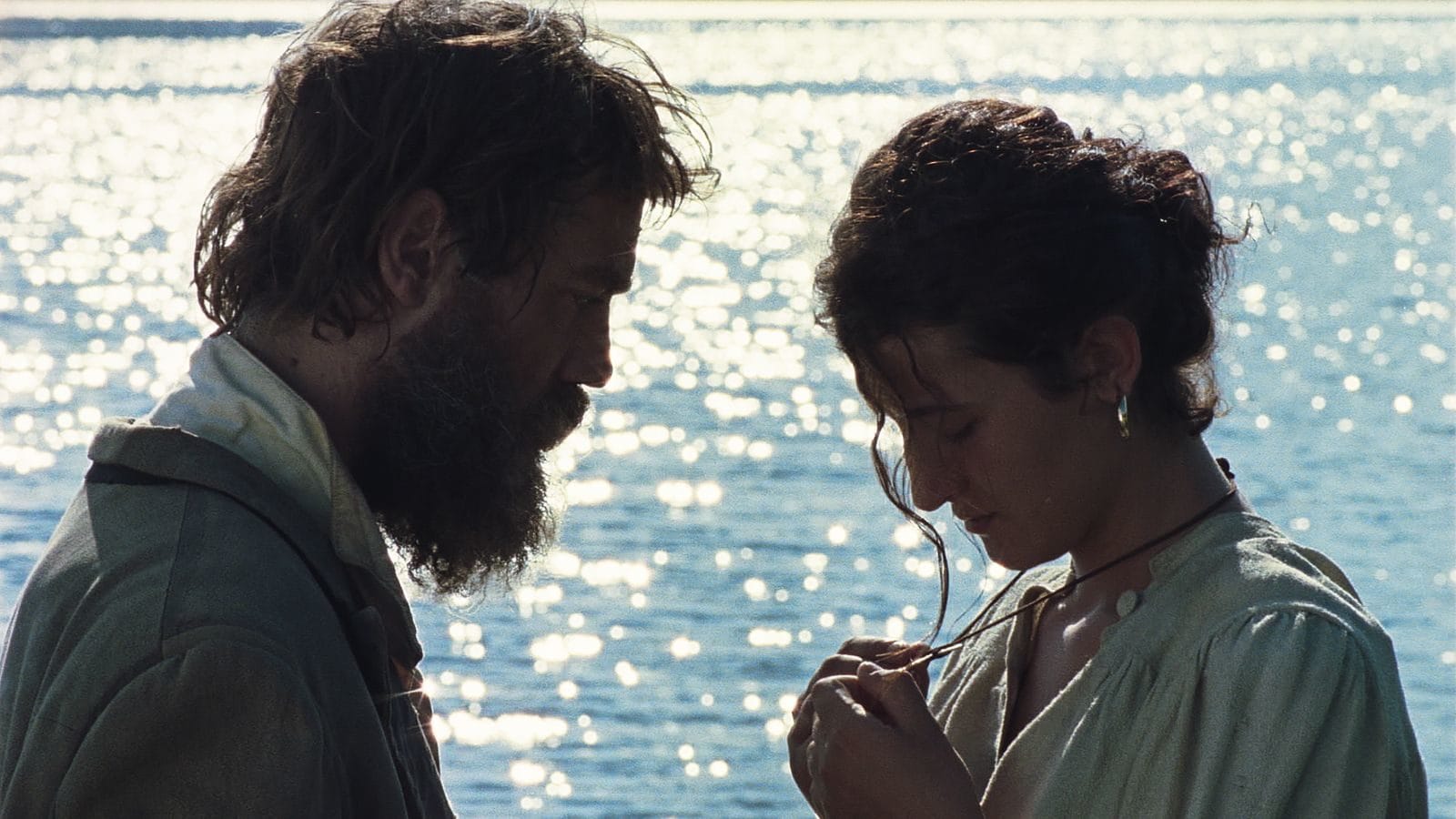Much like their speculative documentary Il Solengo, Alessio Rigo de Righi and Matteo Zoppis’s The Tale of King Crab emerges from a bottomless well of Italian folk tradition, its narrative elaborately draped in veils of hearsay and scuttlebutt. Again, our unreliable narrators are a squad of grizzled old men around a farm table, their faces pockmarked from decades of manual toil and consumption of homemade wine. Set in a rustic hunting lodge in the present day, the film’s opening scene even suggests a continuation of de Righi and Zoppis’s prior film, albeit with a quicker tempo and spontaneous bursts of song. The subject of conversation is once again a mysterious figure from the past whose exploits have become the stuff of legend, but the filmmakers don’t merely document the swirl of speculation, as they also take the baton and contribute to the mythmaking.
The rapscallion of yore discussed by the storytellers is Luciano (Gabriele Silli), the unruly son of a town doctor in the late 19th or early 20th century (nothing is related here without a caveat of uncertainty). When he first appears on screen, the boozy declarations become voiceover, and we’re transported to a bucolic village of crumbling edifices and wild vegetation that suggests something out of Pier Paolo Pasolini’s The Decameron, complete with scene-setting flute music by Vittorio Giampietro. Accounts of Luciano range from the unflattering (“crazy” and “a drunk”) to the reverent (“an aristocrat” and “a saint”), and an austere Silli, hidden behind a mangy beard and an ever-emptying wine bottle, splits the difference by articulating a stubborn nonconformity and a ruthless determination whose end goal is unclear.
As the voices of the narrators recede, de Righi and Zoppis dramatize the story of Luciano’s downfall in a chapter entitled “The Saint Orsio Misdeed.” There is, of course, a love interest—Emma (Maria Alexandra Lungu), the beautiful daughter of a possessive goat farmer (Severino Sperandio)—to whom Luciano plays the toxic Romeo, at first feigning suave disinterest and then pursuing her with a feverish drive. But Luciano’s romantic ambitions are foiled by his own simmering rage at being newly robbed of a certain pathway through town, a main artery for grazing sheep now blocked by an unseen prince. The arbitrary demands of noblemen mean little to the radically egalitarian Luciano, who at one point swears off money entirely, so he burns down part of the castle, an impulsive bit of retaliation with tragic consequences.
If this first chapter feels a bit pro forma, as though de Rigi and Zoppis were too seduced by fairy-tale broad strokes to truly indulge the unwieldiness of oral tradition, The Tale of King Crab’s back half pushes the eccentricity factor. After a brief return to the hunting lodge, where the men confess ignorance to the course of Luciano’s life following his banishment from the town, the film’s narrative absconds to the damp, mossy shores of Tierra del Fuego, at the southernost tip of South America (“The Asshole of the World,” as it’s summarized in a title screen), where the protagonist re-emerges in altered form as a missionary named Antonio.
No longer drowning in liquor, Antonio is now consumed by the prospect of a bounty of Incan gold hidden somewhere on the archipelago, and it’s a treasure for which he believes that his only reliable compass is a molasses-paced king crab. He’s rivaled in this quest by a group of haggard pirates, and the dance of alliances and back-stabbings that play out between the two sides—all conducted under majestic Argentinian skies—turns the film into a primal, oneiric variation on the western, equal parts The Naked Spur, Aguirre, Wrath of God, and Jauja.
De Rigi and Zoppis are clearly under the spell of such formidable reference points but not to the point of stultifying pastiche. What shines most is their preternatural taste for deeply expressive faces, and while the casting of non-professionals in arthouse cinema is hardly novel, the weathered, misshapen, ineffably dramatic mugs rounded up by the Italian co-directors make for compelling viewing even in the near-total absence of actorly chops.
It also helps that The Tale of King Crab is expertly composed by cinematographer Simone D’Arcangelo, who not only fawns over the magic hour but exploits all hours of the day to striking effect and finds vibrant pops of color (such as the shockingly crimson crab) to offset the earthy tones that dominate the film. Whether The Tale of King Crab’s divergent halves add up to much more than another discourse on the wonders and inconsistencies of oral tradition is in the eye of the beholder, but a film that so clearly takes delight in the unfolding of a story and the unpacking of an enigmatic character is refreshing in an arthouse landscape where such narrative qualities are often relegated to secondary concerns.
Since 2001, we've brought you uncompromising, candid takes on the world of film, music, television, video games, theater, and more. Independently owned and operated publications like Slant have been hit hard in recent years, but we’re committed to keeping our content free and accessible—meaning no paywalls or fees.
If you like what we do, please consider subscribing to our Patreon or making a donation.




